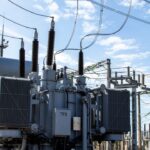A Power over Ethernet switch provides power and data over the same network cable. This cable is either twisted-pair copper or fiber optic. The switch is simple to operate and has multiple Ethernet ports. It also ensures power is supplied to connected devices. The 24 Port PoE Switch can operate in either a Mode A or Mode B configuration.
Power-over-Ethernet technology is used in a variety of applications. Power-over-Ethernet cables are used to connect remote devices that aren’t powered by a local power source. These cables are typically made of 4 twisted pairs and transmit both data and DC power. Initially, Ethernet networks used only two pairs of wires for data and DC power. The IEEE 802.3 standard calls this type of connection an “alternative B mode.”
Power-over-Ethernet cables have a wide range of applications, from small office networking to complex industrial control systems. By combining data and power in one cable, PoE technology can simplify the installation of Ethernet-based industrial control systems. It can also reduce installation time and energy costs. Ultimately, PoE will save you money in the long run. This is because PoE is more flexible than traditional Ethernet cabling.
PoE technology can be less expensive and time-consuming for cable installation, and it can be a better choice if you are planning to connect wireless APs, VoIP phones, and IP cameras to your network. You can find a cheap PoE switch on sites such as FS, which also sells gigabit switches.
PoE allows for electricity to be transmitted through an Ethernet cable. This reduces the amount of network wiring and eliminates the need for powered devices to be close to an AC outlet. It also makes network design more flexible and efficient. You can use PoE extenders to run data up to four times farther than a standard PoE switch.
PoE switches also allow you to adjust the amount of power available to each interface. You can set the maximum power allocation for each line card, but be aware that some devices will receive power in the form of line loss. This loss is usually less than 16 percent.
The Power-over-Ethernet technology allows network switches to supply both power and data over the same cable. It has become increasingly popular due to the expansion of network-connected devices. PoE switches enable faster and more effective solutions for connecting PoE-compatible devices, including VoIP phones, IP cameras, and access points. Traditional switches are unable to provide this functionality and must be powered using additional PSEs or extension cables. This means that PoE switches can save money on infrastructure equipment and simplify deployment.
A Power-over-Ethernet (PoE) switch is a type of switch that allows power to be supplied over an Ethernet cable. It can send and receive data and can even monitor and restart devices in an emergency. These switches are available in different configurations and prices. A PoE switch works by providing DC power to remote devices over Ethernet. PoE is an industry-standard technology for powering a network. It’s often used in situations where a device needs to be powered but does not have a power source nearby.
A PoE switch’s power management features allow it to optimize the power distribution across its ports. If there’s not enough power available, it automatically switches power to powered devices. If this happens, a message is written to the system log. In many cases, power isn’t enough for a specific device, but power management features can adjust this power allocation.
PoE switches help simplify installation, and can significantly reduce costs. They use lower voltage than the mains voltage. However, PoE can damage some equipment that isn’t designed for it. If you aren’t sure if your equipment is compatible with PoE, consider purchasing a PoE switch. Its functionality allows it to make it easy for devices on your network to communicate with each other.









